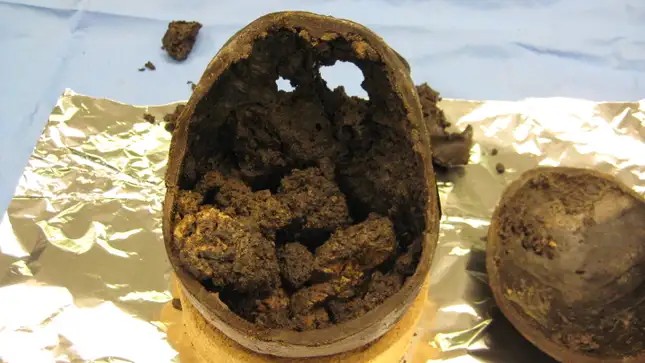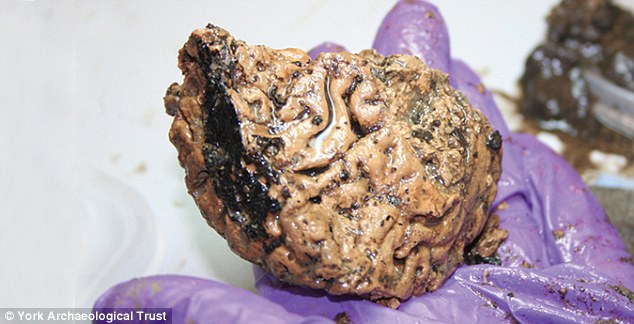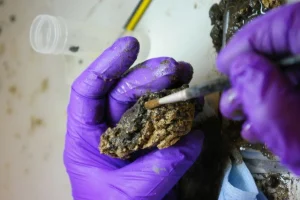Unlocking Mysteries: 2,600-Year-Old Beheaded Man’s Brain Defies Decay!
Around 2,600 years ago, about the time humans started making steel and building weapons, a man lost his head. Subsequently, the real-life, Iron Age Ned Stark’s lopped-off skull became buried in clay-rich mud, and remained there until York Archeological Trust researchers dug it up in 2008. They made the finding in Heslington, a suburban village near modern-day York, England.

What they found inside the ancient man’s skull shocked them: A large chunk of the brain was in remarkable shape, considering its age. The brain tissue, now known as the “Heslington brain”, had shrunk slightly over the years, but still contained its hallmark grooves and folds.
It’s considered the oldest preserved brain ever found in Eurasia, and is likely the best-preserved ancient brain overall. In a study released this week in the Journal of the Royal Society Interface researchers reveal why it’s been able to stand the test of time.

For the past decade, scientists have sought to understand how and why the Heslington brain could have survived. In the study, the researchers note that, apart from this brain, no other brain from the Iron Age has been found preserved without deliberate human intervention.

That’s because the human brain breaks down rapidly after death. When a person dies a process called autolysis kickstarts, which causes tissues and organs to break down. The brain is 80 percent water and one of the first organs to go down. Within five to 10 years, the brain tissue is typically totally degraded, research suggests.
So the Heslington brain’s zombie-like condition was perplexing to scientists, when most human brains don’t survive decades, let alone millennia in the ground, except under specific conditions like deliberate mummification or in ice.
However, through a complicated series of molecular and statistical analyses, the researchers discovered what made the Heslington brain endure: protein clumping.
That means that the brain actually preserved itself. When researchers took a closer look, they discovered that certain proteins, which support the structure of nerve and brain cells like neurons and astrocytes, were clustered close together in the brain tissue. The protein aggregation kept the brain tissue stable over time, helping slow down the natural decomposition process.

Surprisingly, the researchers also found that the Heslington neural proteins were more stable than modern-day brains. Protein stability is an indirect signal of how well a protein is functioning, the researchers explain.
Interestingly, protein aggregation typically comes along with brain diseases like Alzheimer’s and Parkinson’s, although the researchers didn’t find evidence of these conditions in the ancient brain.
In this case, scientists aren’t sure what sparked this critical clumping process, but speculate that it may relate to where and how the skull was buried.
The team’s findings have the potential to spark novel preservation techniques for the human brain — in life and after death. Quite the legacy for an ancient human.
Related Post
A shocking documentary proves that mermaids do exist
SHOCKING Revelation: Thuya, Mother of Queen Tiye, Was the Grandmother of Akhenaten and Tutankhamun—What Ancient Egyptian Secrets Did She Leave Behind?
Breaking News: Astonishing Discoveries at Karahan Tepe Confirm an Extraterrestrial Civilization is Hiding on Earth, and NO ONE Knows!
Breaking News: Researchers FINALLY Discover U.S. Navy Flight 19 After 75 Years Lost in the Bermuda Triangle!
NASA’s Secret Investigation: Uncovering the Astonishing Mystery of the UFO Crash on the Mountain!
Explosive UFO Docs LEAKED: Startling Proof That Aliens Ruled Ancient Egypt!